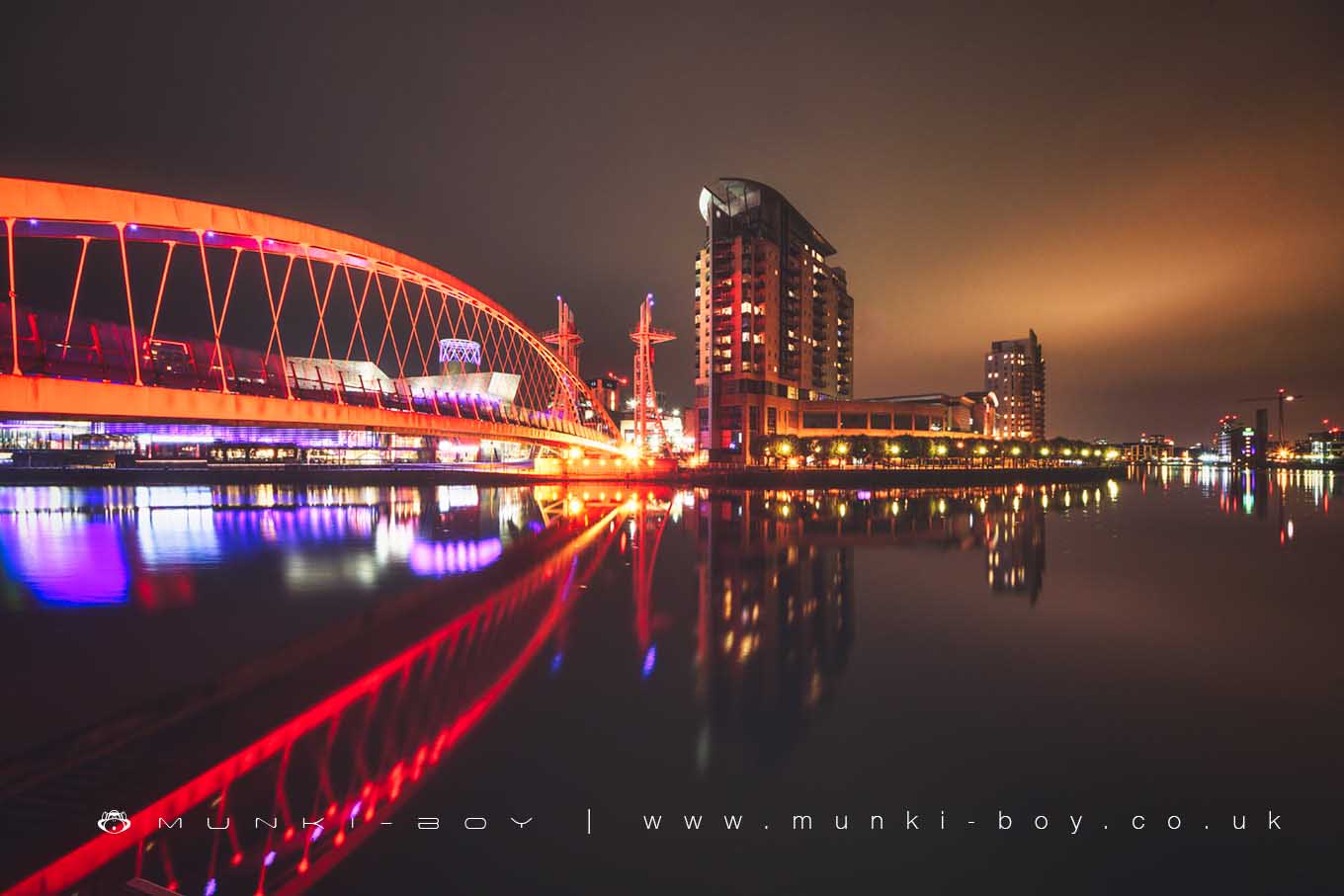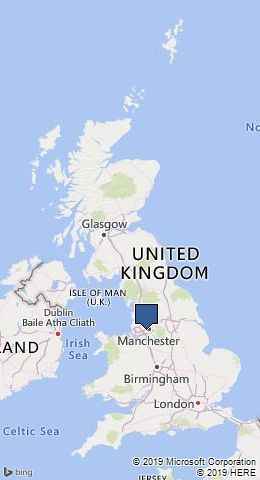
Salford Quays by munki-boy
Salford
Salford, now an integral part of the Greater Manchester urban area in North West England, has a rich and varied history, much of which predates its more famous neighbor, Manchester. Historically, Salford was a key part of Lancashire. Its roots stretch deep into the Anglo-Saxon period, and it was notably significant during the medieval era.
The name “Salford” derives from the Old English “Sealhford,” meaning a ford by the willow trees, indicating its early significance as a crossing point on the River Irwell. This strategic position fostered its development. By the time of the Domesday Book in 1086, Salford had already been established as a thriving settlement, reflecting its importance in the region.
One of the most intriguing aspects of Salford’s history is its role as the center of the “Salford Hundred,” an administrative division used in England before the introduction of counties. The Hundred, a term used to describe a group of 100 households, was an important unit of local government in medieval England. The Salford Hundred was notable for being one of the subdivisions of the historic county of Lancashire. It encompassed several parishes and townships, including Manchester, a testament to Salford’s historical prominence over its now larger neighbor.
In medieval times, Salford grew around its manorial estate, church, and market. The Lord of the Manor of Salford had significant judicial and administrative powers, overseeing the Hundred Court, which dealt with both civil and criminal matters. This importance continued throughout the Middle Ages, with Salford remaining a key administrative and judicial center.
The Industrial Revolution dramatically transformed the area. Salford and Manchester became hotbeds of industry, with Salford developing a significant role in textiles, dyeing, and other industries. The Manchester Ship Canal, opened in 1894, turned Salford into an inland port, further boosting its economic status. This development led to rapid urbanization and a significant increase in population, with people drawn by the prospects of employment.
In contemporary times, Salford has experienced various phases of redevelopment and regeneration. It’s home to the University of Salford, MediaCityUK (a major hub for media organizations including the BBC and ITV), and a range of cultural and historical attractions, such as the Salford Museum and Art Gallery, and the Lowry, a theatre and gallery complex.
Despite the overshadowing growth of Manchester, Salford retains a distinct identity, deeply rooted in its rich historical past as the core of the Salford Hundred and its pivotal role in the industrial development of the region. This history is not just a matter of local importance but is also integral to understanding the broader industrial and social evolution of North West England.
Created: 12 August 2019 Edited: 29 November 2023
Salford
Shopping in Salford
Salford Shopping Centre Pendleton Way, Pendleton
Salford Shopping Centre mall
Digital World Centre Lowry Plaza, Salford Quays
Digital World Centre mall
Ellesmere Centre High Street, Walkden
Ellesmere Centre mall
Radclyffe Park Ordsall, Salford
Radclyffe Park retail park
West One Retail Park Little Bolton, Eccles
West One Retail Park retail park
Riverside Retail Park Ordsall, Salford
Riverside Retail Park retail park
Regent Retail Park Ordsall, Salford
Regent Retail Park retail park
Red Rose Centre Ordsall, Salford
Red Rose Centre retail park
ALDI Church Road, Ellesmere Park
ALDI supermarket
Sainsbury's 100, Regent Road
Sainsbury's supermarket
Morrisons 7, Irwell Place
Morrisons supermarket
Morrisons 49, Swinton Hall Road
Morrisons supermarket
Asda 604-612, Bolton Road
Asda supermarket
ALDI 51, Swinton Hall Road
ALDI supermarket
ALDI 389, Bolton Road
ALDI supermarket
Asda 25, Wellington Road
Asda supermarket
Heron Foods Heywood Way, Pendleton
Heron Foods supermarket
The Food Warehouse Centenary Way, Little Bolton
The Food Warehouse supermarket
B&M Bargains Bevendon Square, Higher Broughton
B&M Bargains supermarket
Lidl Eccles New Road, Little Bolton
Lidl supermarket
Lidl 6, Lower Broughton Road
Lidl supermarket
Salford Off Licence 559-563, Liverpool Street
Salford Off Licence supermarket
Asda Great Cheetham Street East, Higher Broughton
Asda supermarket
Local History around Salford
There are some historic monuments around including:
Lime kiln and associated culvert 50m north of Worsley Methodist ChurchRemains of eastern wall of the Roman fortRingley Old BridgeWardley Hall moated site, WorsleyBridgewater Canal's Barton Aqueduct embankment and retaining wallsCanal tunnel entrances and wharf.Wildlife in and Around Salford
Mammals found in Salford
There have been 33 species of mammals recorded in the salford area.
| 45 Khz Pipistrelle (Pipistrellus pipistrellus) |
| American Mink (Neovison vison) |
| Bank Vole (Myodes glareolus) |
| Brandt's Bat (Myotis brandtii) |
| Brown Long-Eared Bat (Plecotus auritus) |
| 55 Khz Pipistrelle (Pipistrellus pygmaeus) |
| Badger (Meles meles) |
| Black Rat (Rattus rattus) |
| Brown Hare (Lepus europaeus) |
| Brown Rat (Rattus norvegicus) |
Tap here for more mammals found in and around Salford
Fish found in Salford
There have been 22 species of fish recorded in the salford area.
| Atlantic Salmon (Salmo salar) |
| Bream (Abramis brama) |
| Brown/Sea Trout (Salmo trutta) |
| Carp (Cyprinus carpio) |
| Crucian Carp (Carassius carassius) |
| Barbel (Barbus barbus) |
| Brown Trout (Salmo trutta subsp. fario) |
| Bullhead (Cottus gobio) |
| Chub (Squalius cephalus) |
| Dace (Leuciscus leuciscus) |











